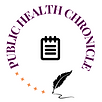Public Health News Analysis
80% Shortage of Specialist Doctors in CHCs: Rural Health Statistics report by Ministry of Health

Author: Dr. Madhvi Dhamania
Updated on :
June 16, 2023
Health Statistics, Rural Health, Doctor-Population Ratio, Human Resource, Sustainable Development Goals, Health Workforce
The Rural Health Statistics report published annually by MOHFW provides information on the public health infrastructure and human resources. In rural areas, the number of health centres has increased, but the shortage of doctors in Community Health Centres has jumped from 45% in 2005 to 80% in 2022. The reported doctor-population ratio in India is 1:834. Enhanced investment in Human Resources for Health will bring out a greater change in the health system.
What is Rural Health Statistics?
The Statistics Division of the Ministry of Health and Family Welfare are responsible for publishing Rural Health Statistics annually.
It is a critical source of information on the public health infrastructure and human resources across the Rural, Urban and Tribal areas of the country.
The report is grounded on data uploaded by States/UTs on Health Management Information System (HMIS) Portal which is published after verification.
The latest document provides updated information up to 31st March 2022.
Structure of the document:
What’s new in this updated version?
A new table containing the number of beds at the health centres functional in India has been newly added.
Uses of the document
It facilitates the identification of gaps in existing infrastructure.
Additional key resources for better management of the public health delivery system are identified.
Decision-making and policy intervention by policy planners, researchers, NGOs and other stakeholders working in the field of Health and Family Welfare.
Key Statistical Highlights w.r.t CHC
There has been an increase of 63.8% in number of Community Health Centres (CHCs) in 2022 as compared to 2005.
Currently, there are 5480 and 584 CHCs functioning in rural and urban areas respectively. There is an aggregate of 960 CHCs in the tribal areas as on 31st March 2022.
An increase in CHCs from 2005 has been reported especially in Uttar Pradesh (443), Tamil Nadu (350), Rajasthan (290), West Bengal (253) and Bihar (168).
Specialists at the CHCs have increased from 3550 in the year 2005 to 4485 in the year 2022.
Compared to the requirement, a shortage of 79.5% of specialists at the CHCs was found. There is a shortfall of
83.2% of Surgeons
74.2% of Obstetricians & Gynaecologists
79.1% of Physicians
81.6% of Paediatricians
17348 General Duty Medical Officers (GDMOs) Allopathic and 661 AYUSH Specialists along with 2971 GDMO AYUSH are available apart from specialists. Also, there are 696 Anaesthetists and 228 Eye Surgeons at CHCs.
Despite the fact that in rural areas the number of health centres has increased, the shortage of doctors in Community Health Centres has jumped up from 45% in 2005 to 80% in 2022.
In a comparative study of the State-wise status of manpower in 2021 and 2022, there is a marginal increase in the number of Specialists at CHCs.


Shortfall vs Vacancy Calculation [1]:
Shortfall = Required[R] - In Position [P]
Vacancy = Sanctioned [S] - In Position [P]
Staffing Pattern Norms and Recommended Doctor-Population Ratio
The CHC has 30 in-door beds with one OT, X-ray, labour room, and laboratory facilities, provides obstetric care and specialist consultations and acts as a referral centre for 4 PHCs.
As per the IPHS, the essential staffing norm is 46 at the CHC and the desirable is 52.[3]
The CHC should cater to a population of 80,000-1,20,000. As per the RHS 21-22, CHC catered to 1,64,027 of the population.
A doctor-population ratio of 1:1000 is prescribed by WHO.
Also, the WHO Global Strategy on 'Human Resource for Health: Workforce 2030' reported that countries require about 44.5 doctors, nurses and midwives per 10,000 population to be able to attain the median target of the Sustainable Development Goals tracer indicators.[2]
As on June 2022, 13,08,009 allopathic doctors have been registered with the State Medical Councils and NMC. Assuming 80 per cent availability of registered allopathic doctors and 565,000 Ayurvedic, Unani, Siddha and homoeopathic doctors, India’s doctor-population ratio is reported as 1:834.
Human Resource for Health (HRH) as a part of SDG (Sustainable Development Goals)
SDG Target 3.c targetting health workforce aims to increase the health financing and recruitment, development, training and retention of the health workforce in developing countries, especially in the least developed countries and small island developing States.[4]
Conclusion
Almost two-thirds of the country’s population resides in rural areas and yet there is a reported shortfall of specialist doctors at the CHC level.
An in-depth exploration of the reasons behind the shortfall in HRH is essential to achieve SDG targets in a timely manner.
Also, an enhanced investment in HRH has multiple benefits with the potential for a positive impact going far beyond the health sector.
It can help strengthen the health system and improve the accessibility to health workers, thereby reducing out-of-pocket expenses encountered by the masses. Also, employment for health workers and subordinate/support staff can be generated, as well as enhancement of female labour force participation and share of formal employment in total employment can be done.
References
1. MOHFW Rural Health Statistics 2021-22: Ministry of Health and Family Welfare, Government of India. Available from https://main.mohfw.gov.in/sites/default/files/RHS%202021%2022.pdf
2. WHO (2016). Global strategy on human resources for health: workforce 2030. Available from https://www.who.int/publications/i/item/9789241511131
3. MOHFW Indian Public Health Standards (IPHS). Guidelines for Community Health Centres Revised guidelines 2012 New Delhi Directorate General of Health Services, Ministry of Health and Family Welfare, Govt. of India 2012. [Internet] Available at: https://nhm.gov.in/images/pdf/guidelines/iphs/iphs-revised-guidlines-2012/community-health-centres.pdf
4. SDG Target 3.c :Available from: https://www.who.int/data/gho/data/themes/topics/indicator-groups/indicator-group-details/GHO/sdg-target-3.c-health-workforce
.png)